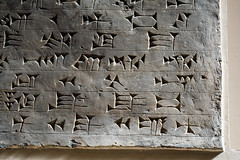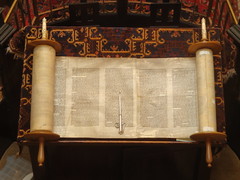First set of words in the AP World History book by the Princeton Review.
| 5472462384 | Agriculture | The deliberate effort to modify a portion of Earth's surface through the cultivation of crops and the raising of livestock for sustenance or economic gain. | 0 | |
| 5472462385 | Agrarian | pertaining to land or its cultivation; reforms, societies | 1 | |
| 5472462386 | Bands/ Clans | extended family groups that generally lived together | 2 | |
| 5472462387 | Barbarian | without civilizing influences | 3 | |
| 5472462388 | Bureaucracy | system of managing government through departments run by appointed officials (not elected) | 4 | |
| 5472462389 | Civilization | a society in an advanced state of social development (e.g., with complex legal and political and religious organizations) | 5 | |
| 5472462390 | City-States | different sections of land owned by the same country but ruled by different rulers (e.g. Greece) | 6 | |
| 5472462392 | Domestication | process of adapting plants or animals to make them more useful to humans | 7 | |
| 5472462393 | Economy | system by which goods and services are produced and distributed to meet people's needs | 8 | |
| 5472462394 | Egalitarian | a person who believes in the equality of all people | 9 | |
| 5472462395 | Emperor | supreme ruler of an empire | 10 | |
| 5472462396 | Empire | many territories, countries, or peoples controlled by one government | 11 | |
| 5472462398 | Foraging | the process of scavenging for food | 12 | |
| 5472462399 | Hierarchy | a series of ordered groupings of people or things within a system | 13 | |
| 5472462401 | Hunter-Gatherer | A hunter-gatherer society is one whose primary subsistence method involves the direct procurement of edible plants and animals from the wild, foraging and hunting without significant recourse to the domestication of either plants nor animals | 14 | |
| 5472462402 | Irrigation | supplying dry land with water by means of ditches, aqueducts, and other diversion methods | 15 | |
| 5472462403 | Monarchy | a government in which power is in the hands of a single person who usually inherits their power | 16 | |
| 5472462404 | Monotheism | belief in a single God | 17 | |
| 5472462405 | Neolithic | The New Stone Age from circa 8500 to 4500 BCE: The period of the Stone Age associated with the ancient Agricultural Revolution(s) | 18 | |
| 5472462406 | Nomadic | (of groups of people) tending to travel and change settlements frequently | 19 | |
| 5472462407 | Pastoral | relating to shepherds or herdsmen or devoted to raising sheep or cattle (e.g. pastoral peoples) | 20 | |
| 5472462409 | Philosophy | the rational investigation of questions about existence, knowledge, and ethics | 21 | |
| 5472462410 | Polytheism | belief in multiple Gods | 22 | |
| 5472462411 | River Valley | the fertile land surrounding a river- the first civilizations arose near them | 23 | |
| 5472462412 | Sedentary | remaining in one place | 24 | |
| 5472462413 | Settlement | the act of colonizing or a small group of people in a sedentary position | 25 | |
| 5472462414 | Subsistence | the necessities of life, the resources of survival | 26 | |
| 5472462415 | Surplus | a quantity much larger than is needed | 27 | |
| 5472462417 | Theocracy | government run by religious leaders | 28 | |
| 5472462418 | Traditional | consisting of or derived from tradition; customary practices | 29 | |
| 5472462422 | Analects | "something that is repeated" - a collection of Confucius' famous sayings | 30 | |
| 5472462423 | Bronze Age | a period between the Stone and Iron ages, characterized by the manufacture and use of tools and weapons |  | 31 |
| 5472462424 | Calendar | a system of timekeeping that defines the beginning and length and divisions of the year | 32 | |
| 5472462425 | Code of Hammurabi | the set of laws drawn up by a Babylonian king dating to the 18th century BC, the earliest legal document known in its entirety |  | 33 |
| 5472462426 | Cuneiform | One of the first written languages known: A system of writing in which wedge-shaped symbols represented words or syllables. It originated in Mesopotamia and was used initially for Sumerian and Akkadian but later was adapted to represent other languages of western Asia. |  | 34 |
| 5472462436 | Iron Age | the period following the Bronze Age; characterized by rapid spread of tools and weapons | 35 | |
| 5472462437 | Jewish Diaspora | A "scattering" of the Hebrew people | 36 | |
| 5472462438 | Legalism | In Chinese history, one of the main philosophic currents during the Warring States Period- A philosophy of focusing on the text of written law to the exclusion of the intent of law, elevating strict adherence to law over justice, mercy and common sense |  | 37 |
| 5472462440 | Pyramids | Huge stone tombs with four triangle-shaped walls that met in a point on top |  | 38 |
| 5472462443 | Shang Civilization | China's first dynasty almost 2000 BCE, the time of the first emperor | 39 | |
| 5472462447 | The Torah | the most sacred text of Judaism |  | 40 |
| 5472462448 | The Vedas of Hinduism | Aryan hymns originally transmitted orally but written down in sacred books from the 6th century B.C.E. |  | 41 |
| 5472462449 | Ziggurats | a temple or tomb of the ancient Assyrians, Sumerians, or Babylonians, having the form of a terraced pyramid of successively receding stories |  | 42 |
| 5472462453 | Hinduism | Term for a wide variety of beliefs and ritual practices that have developed in the Indian subcontinent since antiquity. It has roots in ancient Vedic, Buddhist, and south Indian religious concepts and practices. |  | 43 |
| 5472462454 | Trans Saharan | Major trade route that traded for gold and salt, created caravan routes, economic benefit for controlling dessert, camels played a huge role in the trading |  | 44 |
| 5472462455 | Monsoons | Major winds in the Indian Ocean that blew into India for half the year, and blew away from India for the other half. Helped facilitate trade in the Indian Ocean. |  | 45 |
| 5472462456 | Sumerians | people who dominated Southern Mesopotamia through the end of the 3rd Millennium BCE. Responsible for the creation of irrigation technology, cuneiform, and religious conceptions. |  | 46 |
| 5472462457 | Indo-Europeans | Groups of people who came from the area north of the Caucasus mountains, which are between the Black and Caspian seas. Herded multiple animals. Rode into battle on chariots. The Indo-European language of Sanskrit, by the Aryans, are the basis of many languages today. Often accepted and adapted aspects of technology, religions, and social order of those with whom they came in contact. |  | 47 |
| 5472462458 | Patriarchal | Before agriculture, men and women are believed to have a greater degree of equality. But after the rise of agriculture, most human societies became ________ as a result of greater male strength. |  | 48 |
| 5472462459 | caste system | a set of rigid social categories that determined not only a person's occupation and economic potential, but also his or her position in society, there was virtually no social mobility |  | 49 |
| 5472462460 | Paleolithic | (Old Stone Age) a long period of human development before the development of agriculture |  | 50 |
| 5472462461 | Carthage | This city has existed for nearly 3,000 years, developing from a Phoenician colony of the 1st millennium BC. Controlled commerce in the Mediterranean prior to the rise of Roman Power. The expanding Roman Republic took control of many of its outposts after the two Punic Wars. |  | 51 |

